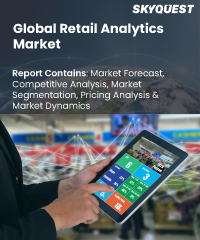
Report ID: SQMIG45C2048

Report ID:
SQMIG45C2048 |
Region:
Global |
Published Date: March, 2024
Pages:
197
|
Tables:
59 |
Figures:
75
Retail Analytics Market Drivers
Increasing adoption of digitalization and the proliferation of smartphones
Retail Analytics Market Restraints
High cost of implementation and the lack of skilled personnel to manage
Our industry expert will work with you to provide you with customized data in a short amount of time.
REQUEST FREE CUSTOMIZATIONWant to customize this report? This report can be personalized according to your needs. Our analysts and industry experts will work directly with you to understand your requirements and provide you with customized data in a short amount of time. We offer $1000 worth of FREE customization at the time of purchase.

Report ID: SQMIG45C2048